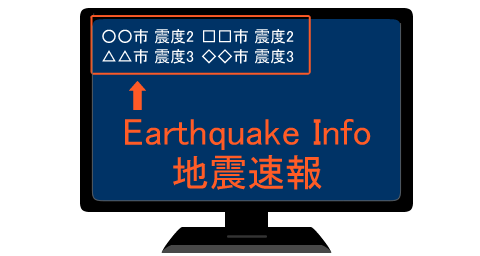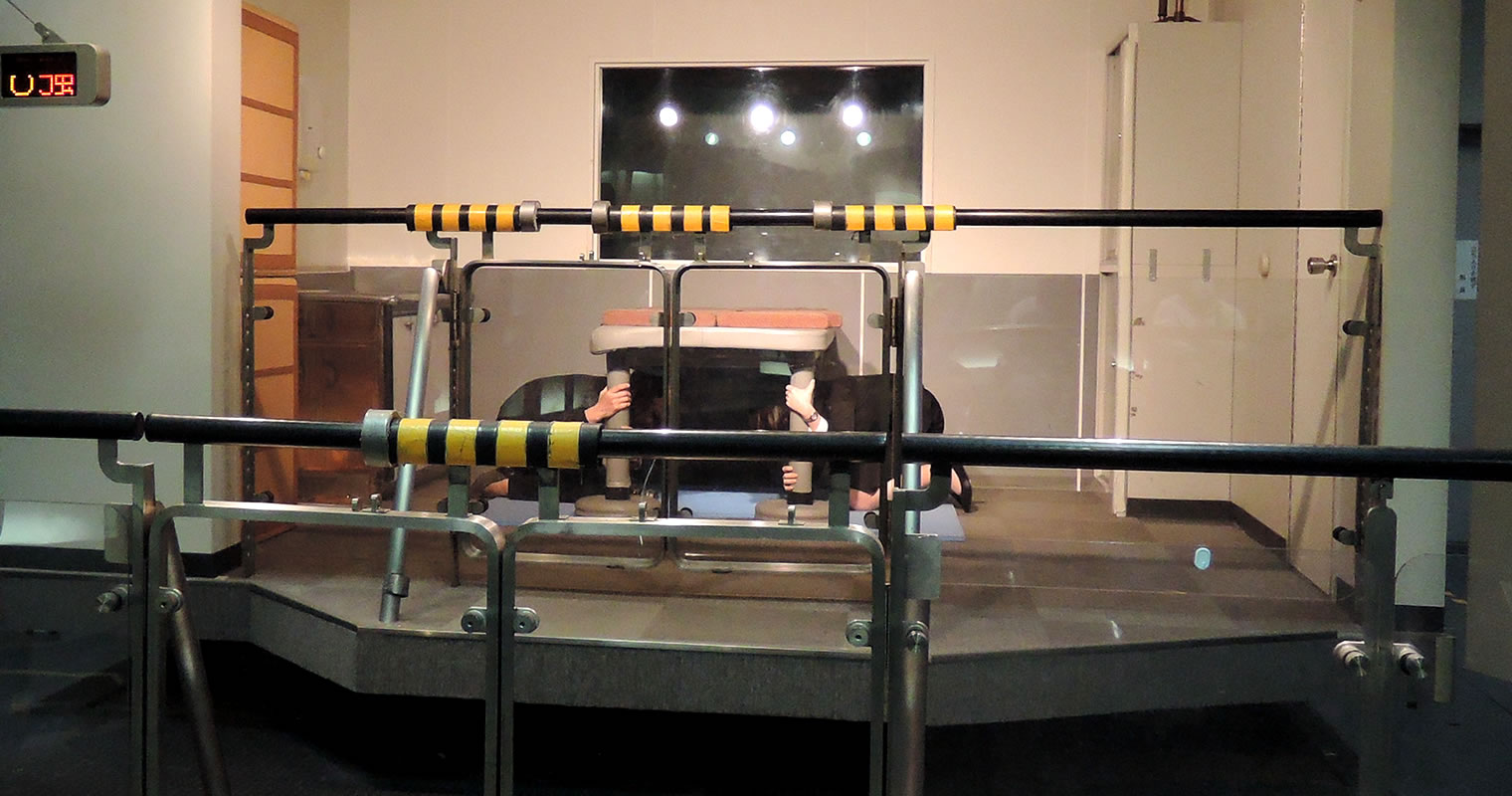How to read earthquake updates (Shindo Sokuhou) and understanding Shindo and Magnitude

When an earthquake occurs, you can get a quick report on TV and the Internet, letting you know where the earthquake has hit and how much it was.
Japan has earthquakes frequently as the land lies along the boundaries of tectonic plates. Although most of the earthquakes are so small that you can hardly sense, many people keep themselves updated with the latest information as large earthquakes sometimes occur, and that may affect daily life.
If an earthquake occurs somewhere in Japan while you are watching TV, you will get a quick report that appears on display in a few minutes. The report is "Earthquake and Seismic Intensity Information" or Shindo Sokuho (震度速報) in Japanese, people usually call it Jishin Sokuhou (地震速報).
How to read Shindo Sokuho 震度速報 (Earthquake and Seismic Intensity Information)
The short report gives information on the occurred earthquake as follows.
例:午後「10時」頃、「関東」地方で地震がありました。
震度2:・・市、 ・・市
震度3:・・市、・・市
e.g. Occurred at "10:00PM" in "Kanto Region"
Shindo 2 at -- City, -- City
Shindo 3 at -- City, -- City
It also informs Tsunami risks, for example;
例:この地震による津波の心配はありません。
e.g. This earthquake poses no tsunami risk.
Additionally, there will be a warning for aftershocks (余震 Yoshin).
例:余震に気をつけて下さい。東海の恐れのある建物には近づかないようにしてください。
e.g. Watch out for the aftershocks. Stay away from damaged buildings as they might collapse.
On the report of Earthquake and Seismic intensity information, Shindo 震度 (Seismic Intensity) is employed as the scale of the earthquake. Shindo includes 10 scales that can be described according to the size of impacts and personal sense, for example;.
Shindo 1: Little tremor that you can sense if you hold still.
Shindo 2: Most people sense a tremor. You can hardly sense it while walking.
Shindo 3: People in buildings sense the shaking and feel anxious.
Shindo 4: People quickly sense the shaking and get scared. You can feel the shaking even while walking.
Shindo 5-lower: People get scared by shaking. Public transport may be disrupted.
Shindo 5-upper: People can hardly walk against large shaking
Shindo 6-lower: Unfixed furniture moves/falls over. Houses with less resistance get cracks on the wall.
Shindo 6-upper to Shindo 7: You cannot stand or even move due to massive shaking. The ground gets cracks and buildings with less-residence fall over.
The different between Shindo (Seismic Intensity) and Magnitude
Shindo (震度 Seismic Intensity) is the scale used for measuring the degree of shaking. Magnitude (マグネチュード) indicates the class of the quake size, measured at the epicenter, which means that upper-scale magnitude is not always involving heavy shake at places far from the epicenter in depth/distance, in other words, people at a town right near the epicenter can feel a heavy shake even if a lower-scale earthquake occurs. What people concerned about when an earthquake occurs, is the size of shaking as it affects daily life; train delays, damages to housing, and that is why the quick report provides information on seismic Intensity.
The scale “Magnitude” is more frequently used on news media to offer seismological data. Magnitude is rated on the scale of M1 to M8, classed M1 - M6 is from the weakest to Middle, and M7 and over is the strongest.
Emergency Earthquake Early Warning
Emergency Earthquake Early Warning or Kinkyu Jishin Sokuho (緊急地震速報) is a system to announce people with alarm on TV, radio, mobile phone, and the internet when the quake is expected to occur. When a large-scale earthquake occurs, the shake spreads in waves where it generates a little time delay to reach, that enables the prediction system to work.
Emergency Earthquake Early Warning is announced about 10 seconds before the quake coming. If you hear the alarm on TV, radio or mobile phone, CALM DOWN and take actions immediately.
What actions to take in 10 seconds when the quake warning is announced
- Move away from windows, fragile objects and furniture in danger of collapse
- Move away from items in danger of falling.
- Open the door to secure an evacuation route.
- If you are in an elevator, press all the buttons to stop and get out at the nearest floor.
- If you are driving, pull off the car and turn on the hazard lamp. Avoid a sudden stop for cars running behind.
For detailed, precise information on what to do if a significant earthquake occurs, check the website of the Meteorological Agency. Also, taking an earthquake drill is advisable as the quake simulation allows you to experience fear and change in awareness of disaster prevention.

An earthquake simulation at HONJO Life Safety Learning Cente in Tokyo. At Shindo 7, you will barely withstand shock and shake.
Related Information
Earthquake Information
https://www.jma.go.jp/en/quake/
気象庁地震情報
https://www.jma.go.jp/jp/quake/
Tokyo Fire Department
https://www.tfd.metro.tokyo.lg.jp/
Desater Prevention Information by Tokyo Metropolitan Government
https://www.bousai.metro.tokyo.lg.jp/
How to Prepare and Respond to a Major Earthquake! by Tokyo Metropolitan Police Department
https://www.keishicho.metro.tokyo.jp/multilingual/english/natural_disasters/respond_to_eq/index.html
Article in Japanese:How to read Shindo Sokuhou (earthquake updates) and understanding Shindo and Magnitude

